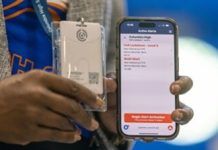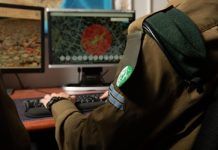Researchers at the University of New Brunswick’s Institute of Biomedical Engineering in Canada are testing gait-based biometric security technology that verifies an individual’s identity using their walking pattern.
The researchers are using interlocking sensor-enabled tiles that capture information about an individual’s gait as they walk across them to develop and trial a biometric identity verification solution that could be used in a range of scenarios such as access control and airport security.
“It combines both physical information — the length of your stride, how heavy you are, how you move, how you roll over your feet as you walk — as well as the behaviours that you exhibit while you walk, so it’s a really rich source of information that provides really unique information about an individual,” project leader Erik Scheme explains in a Canadian Broadcasting Corporation report.
“Somebody might have the same size foot, but everyone has different characteristics, both of the skeleton of the foot, of what you’ve learned over your lifespan, if you’ve had injuries before that you’ve evolved to compensate for.
“And then combine that with how you move as you walk — first you strike the floor with your heel, you roll over your foot, you go to the fore-foot and toe off — and as you do that you might move a little more to the right or to the left as you do that. So we combine all that spatial-temporal information and it begins to build a really unique profile.”
The researchers are testing the technology as an alternative to existing biometric solutions that use fingerprint or facial recognition technology. Their aim is to develop a system that can reliably verify an individual’s identity without requiring them to stop moving through gates and other access-restricted zones and is potentially less obtrusive, the team says.
The project is using high-resolution tile sensors originally developed for use in healthcare by Canadian technology provider Stepscan and is scheduled to run until May 2024.








